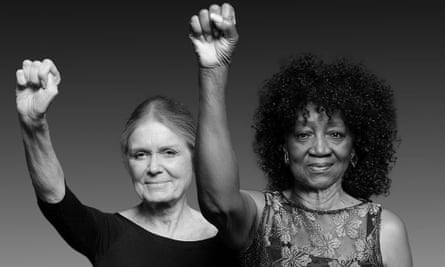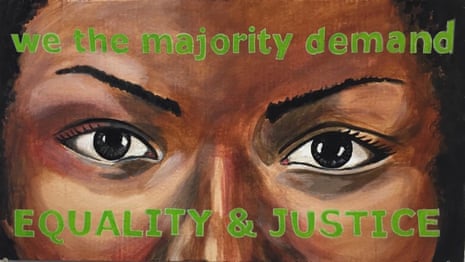As a headline it was strange but memorable: The Spirit of the People Will Be Stronger than the Pig’s Technology. These words adorned the splash of an underground newspaper from 1967, Guerrilla: Free Newspaper of the Streets. A sister publication of The Black Panther newspaper – one of the key publications which fueled America’s political activist scene in the 1960s.
This paper is on view at the Fortnight Institute in New York, which opens today and is just one of many exhibitions in the city that looks back on the political movements that changed New York in the past century. From the women’s suffrage movement to civil rights, four exhibitions in the city look at political ephemera as a way to tell the history of revolutionary voices.
“It was one of the most politically radical and poetically vibrant publications of the late 1960s,” said the exhibition’s curator Arthur Fournier. “It believed, from its very beginning, that poetry is politics.”
Guerrilla featured the early writings of famed African American poet LeRoi Jones (also known as Amiri Baraka), feminist beat poet Diane Di Prima, Vietnam War photographer Margaret Randall and French philosopher Regis Debray. It features photos of the Black Panther party taken by photojournalist Leni Sinclair, posters from the anti-racist White Panther party and the Puerto Rican group, the Young Lords.
Almost 50 years later, Guerrilla still feels relevant, especially with the current political climate. “With a populist rightwing president in office, antifascist youth on the march and conservative NRA-backed militias promising to back the Trump administration with ‘the clenched fist of truth’, the cataclysmic vision of total revolution seems as powerful today as it was in 1967,” said Fournier.
“Rather than glorifying violence in the name of revolutionary art and social change,” he adds. “Our exhibition seeks to interrogate the history of leftwing militant protest movements in America and carefully examine their outcomes.”
At the New York Historical Society, one exhibition looks at the centennial of women’s suffrage. Hotbed features more than 100 photos, posters and ephemera that traces the history of how women earned their right to vote in 1917.
There are the works of pioneers such as Mina Loy, the poet who wrote the Feminist Manifesto in 1914, and photos by Jessie Tarbox Beals, a photojournalist who took portraits of women artists in Greenwich Village, who refused to have children and devoted their lives to their art.

Independent women weren’t received well. In 1914, Charlie Chaplin starred in A Busy Day, a film where he dresses up as a woman to attend a suffrage protest. “Although the film doesn’t directly mock women for wanting the vote, Chaplin’s character combines several negative stereotypes about independent women and suffragists as pushy, aggressive, jealous, self-centered, and inconsiderate,” says Hotbed co-curator Joanna Scutts.
The show also features footage from the 1917 National Association for the Advancement of Colored People protest, where 10,000 black New Yorkers marched down Fifth Avenue to address lynching, racism and discrimination. They also have paraphernalia from early talks on feminism at Cooper Union.
“Feminism in the 1910s addressed a lot of issues that were taken up by the later, second-wave, 1960s and 1970s feminist movement,” says Hotbed co-curator Sarah Gordon, “like a woman’s right to keep their own names after marriage, to be paid equally, to decide when and whether to have children, and the right to fully participate in the political process.”
The Greenwich Village activists were on the more radical end of the spectrum, but the exhibition hopes to put the suffrage movement in the larger context of activism. “Fighting for the vote made women aware of other forms of injustice in society, and how far women still had to go to achieve equality,” says Gordon. “The ongoing fight for an Equal Rights Amendment began right after women won suffrage.”
Another exhibition, Beyond Suffrage: A Century of New York Women in Politics, which runs until 22 July at the Museum of the City of New York, also celebrates the centennial of the woman’s vote. They have a Hillary Clinton suit, photos from the suffrage parade at Madison Square in 1915, a handwritten speech by Eleanor Roosevelt from 1932 and a campaign poster for Shirley Chisholm, the first black woman elected to the US Congress in 1968.
“For over a century, New York has served as both a training ground and a battleground in the fight for women’s rights,” says curator Sarah Seidman. “The women in this exhibition are connected by a deeply held belief in voting as a way to address societal problems and a fiery desire to challenge the stereotypes and barriers that confronted the generations that preceded them.”
Over at the Whitney Museum, An Incomplete History of Protest is a group exhibition showing key works of political art from both artists and activists. There is a portrait of Ronald Reagan, who stalled on giving a speech on the Aids epidemic in the 1980s, by Donald Moffett. There is a colourful mural from street artist Keith Haring, which he made in 1989, one year before he died of Aids-related complications. The words of his mural spell out like an equation, which can be a metaphor for protest art: “Ignorance = Fear” and “Silence = Death.”
The Spirit of the People Will Be Stronger than the Pig’s Technology is on at the Fortnight Institute until 10 December; Hotbed is on at the New York Historical Society until 25 March 2018; Beyond Suffrage: A Century of New York Women in Politics runs until 22 July 2018 at the Museum of the City of New York; and the Whitney Museum hosts An Incomplete History of Protest until 28 August 2018

Comments (…)
Sign in or create your Guardian account to join the discussion